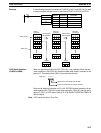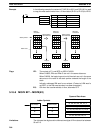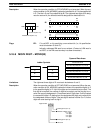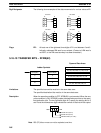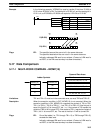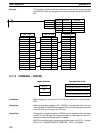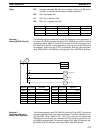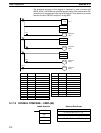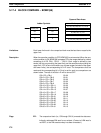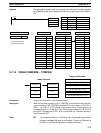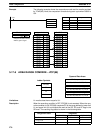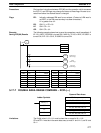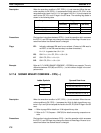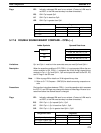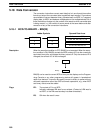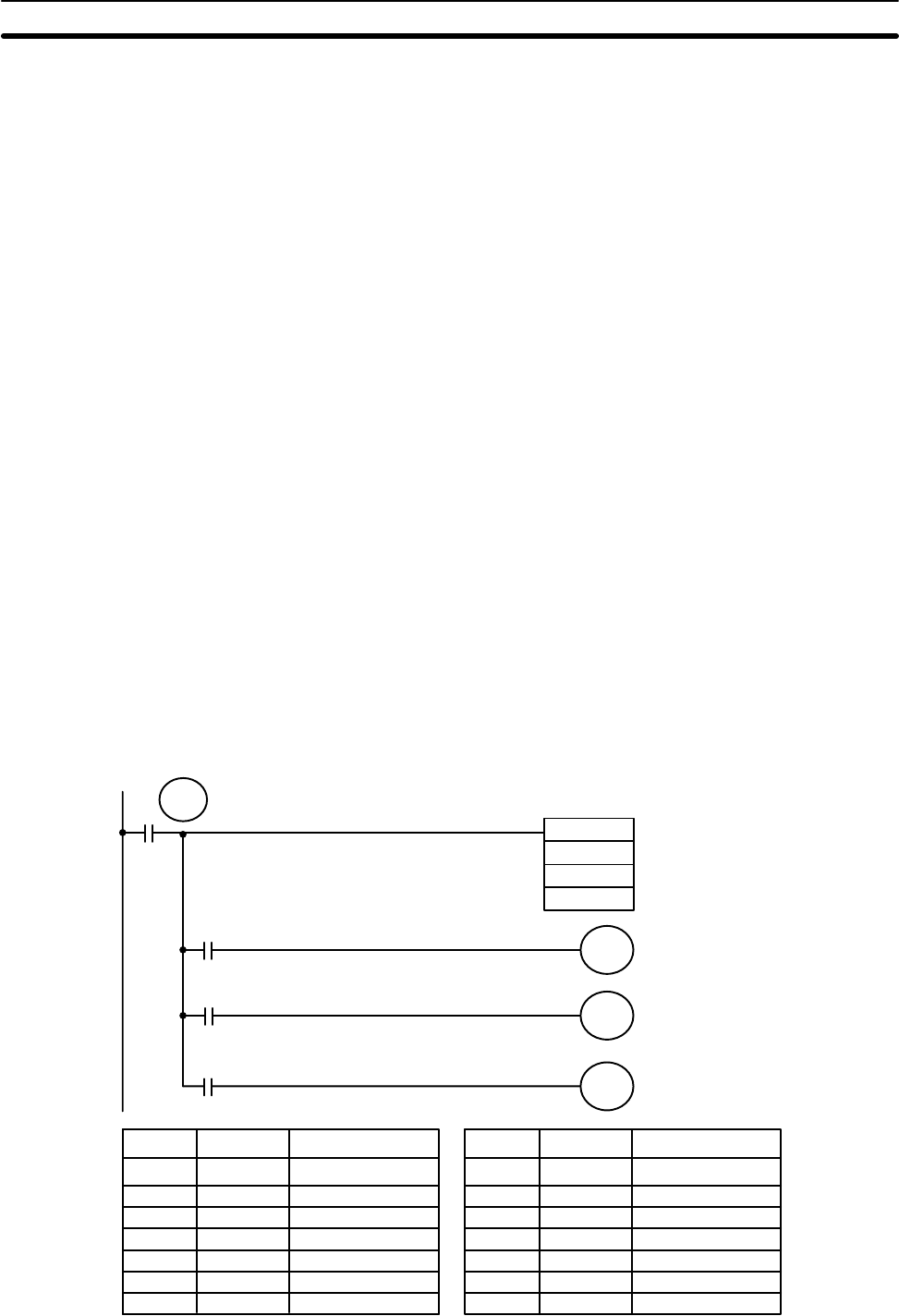
173
Limitations Cp1 and Cp1+1 must be in the same data area, as must Cp2 and Cp2+1.
Description When the execution condition is OFF, CMPL(60) is not executed. When the exe-
cution condition is ON, CMPL(60) joins the 4-digit hexadecimal content of
Cp1+1 with that of Cp1, and that of Cp2+1 with that of Cp2 to create two 8-digit
hexadecimal numbers, Cp+1,Cp1 and Cp2+1,Cp2. The two 8-digit numbers are
then compared and the result is output to the GR, EQ, and LE flags in the SR
area.
Precautions Placing other instructions between CMPL(60) and the operation which ac-
cesses the EQ, LE, and GR flags may change the status of these flags. Be sure
to access them before the desired status is changed.
CMPL(60) cannot be used to compare signed binary data. Use CPSL(––)
instead. Refer to
5-17-9 DOUBLE SIGNED BINARY COMPARE – CPSL(––)
for
details.
Flags ER: Indirectly addressed DM word is non-existent. (Content of ∗DM word is
not BCD, or the DM area boundary has been exceeded.)
GR: ON if Cp1+1,Cp1 is greater than Cp2+1,Cp2.
EQ: ON if Cp1+1,Cp1 equals Cp2+1,Cp2.
LE: ON if Cp1+1,Cp1 is less than Cp2+1,Cp2.
The following example shows how to save the comparison result immediately. If
the content of HR 10, HR 09 is greater than that of 011, 010, then 00200 is turned
ON; if the two contents are equal, 00201 is turned ON; if content of HR 10, HR 09
is less than that of 011, 010, then 00202 is turned ON. In some applications, only
one of the three OUTs would be necessary, making the use of TR 0 unnecessary.
With this type of programming, 00200, 00201, and 00202 are changed only
when CMPL(60) is executed.
CMPL(60)
010
HR 09
00000
25505
00200
25507
00202
TR
0
25506
00201
Greater Than
Equal
Less Than
–––
Address Instruction Operands Address Instruction Operands
00000 LD 00000
00001 OUT TR 0
00002 CMPL(60)
HR 09
010
00003 AND 25505
00004 OUT 00200
00005 LD TR 0
00006 AND 25506
00007 OUT 00201
00008 LD TR 0
00009 AND 25507
00010 OUT 00202
Example:
Saving CMPL(60) Results
Data Comparison Section 5-17



